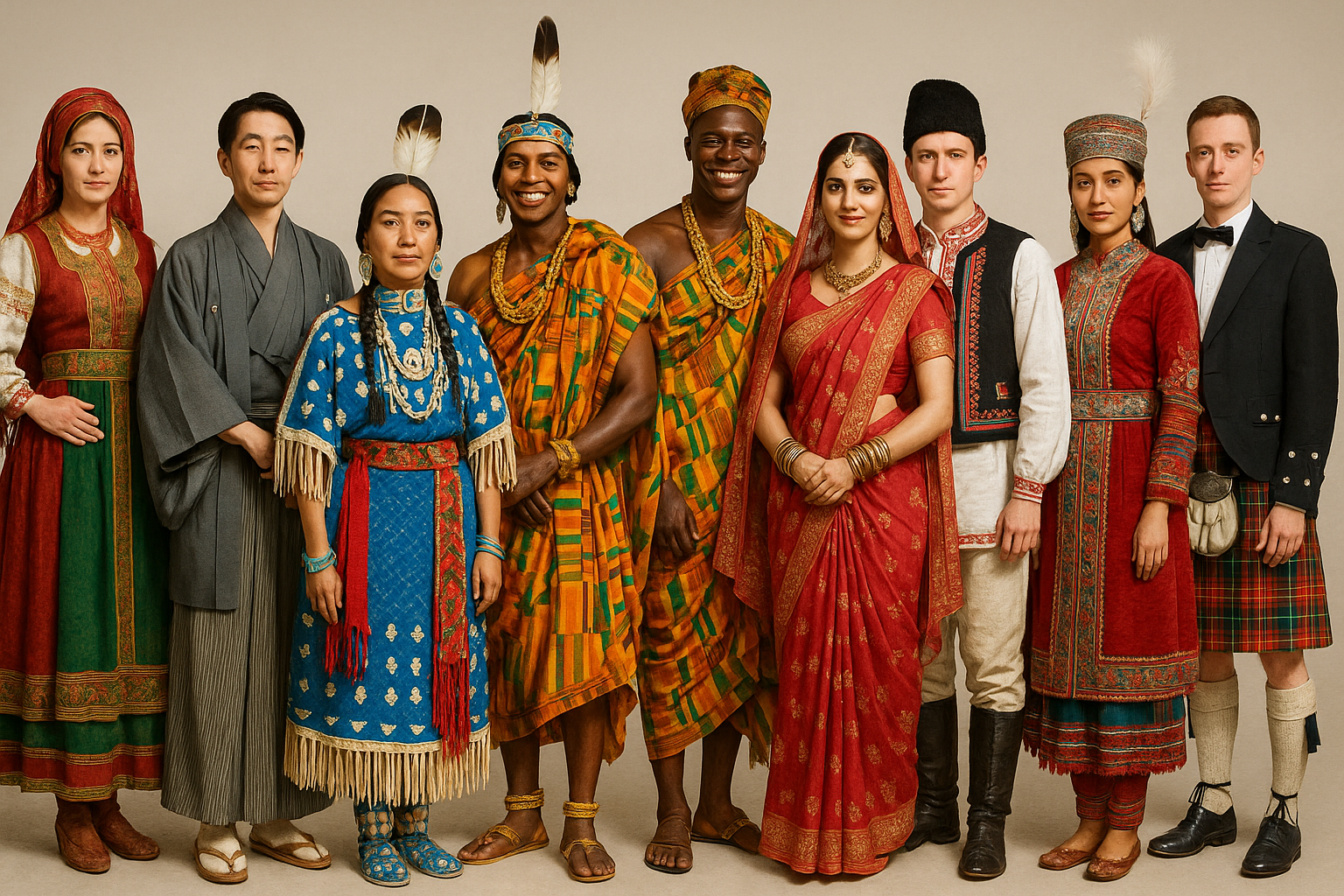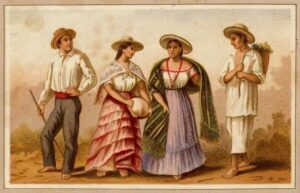Clothing doesn’t only cover our bodies. It’s an incredibly powerful representation of what we’re about and where we’re from and the beliefs that we cherish. Culture-specific clothing is a key element in maintaining and expressing our cultural identity. It’s much more than just clothing. It’s an expression of our history as well as society and our beliefs.
In this article, we’ll examine the ways in which the clothing of a culture provides insights into the past as well as reflects societal values and connects people to their culture. From ancient civilizations to contemporary fashions, the clothes people wear serve as a means to tell stories about the past and the present.
The Historical Significance of Cultural Clothing
Through time the importance of clothing has been more than an essential requirement. It was used to indicate your social status as well as a connection to a larger group of people. If we examine the traditional clothing used by diverse cultures, we discover important information about how these societies operated.
Clothing as a Social Status Symbol
In the past, cultural clothing was commonly used to differentiate the wealthy from the less fortunate. Consider, for instance, Ancient Egypt. Pharaohs wore elaborate, exquisitely made linen clothing, which was often decorated with precious stones and gold to display their royal power and status. The wealthy wore clothes constructed of premium materials while the average people were wearing simple clothes made of cotton or linen.
The same could be said in regards to Ancient Rome. Roman residents wore tunics however, the fabric and color reflect their status in society. For instance, senators had tunics that featured purple stripes because the dye used to make purple was rare and costly. The wearing of clothes to show rank was widespread in many ancient societies.
Cultural Clothing and Its Historical Significance
In various different cultures, cultural clothing has been worn to show the values and traditions of a specific society. For instance, in Japan the Kimono has been worn for a long time, representing the country’s rich past and relationship to the natural world. The intricate designs of the kimono as well as vibrant colors often reflect the person wearing it’s history as a family member or their position in the local community.
Similar to India in India, in India, the sari isn’t only a clothing item but also it is a symbol of culture, tradition, and even a sense of regional identity. The various styles of draping and the fabric used can be a representation of the place of origin and the significance of saris remains the same for centuries.
Cultural Clothing and Societal Norms
Clothing is usually deeply connected with the values and standards of a community. In several cultures, traditional clothes reflect the political, social and religious beliefs that were prevalent at the time.
Religion and Cultural Clothing
In many societies, cultural clothing is influenced by religious beliefs. For instance in Islamic religion, the hijab, abaya, and the niqab are worn as a sign of modesty. They are not just for fashion, they reflect the wearer’s devotion to the principles of their religious beliefs. Similar to this, Jewish individuals wear the kippah (skullcap) when they pray to demonstrate their reverence and a connection to God.
Within Christianity in the Christian faith, sacred clothes such as the nun’s robes as well as priest’s outfits wear to symbolize the spiritual fervor and devotion to God.
Cultural Clothing and Gender Roles
Cultural clothing is also utilized to strengthen gender roles. In various societies, clothing has defined what’s feminine or masculine. For Western society such as the West women were traditionally dressed in skirts and dresses, while males wore pants. These choices in clothing were not just personal preference, but were also tied to how society perceived gender roles.
However, in recent times the trend has begun to shift. Nowadays society is embracing more gender-neutral clothes and people are moving away from gender-based traditional fashions. In some countries, such as Norway in Norway, both genders are required to wear bunads–traditional clothes that celebrate their culture, no matter what gender.
Cultural Clothing and Identity
At its heart, cultural clothing represents personal and community identity. For many traditional clothes are an opportunity to keep the connection to their culture as well as to celebrate their culture and transmit their traditions through generations.
Cultural Pride and Clothing
For Indigenous communities all over the world, cultural clothing is an act of pride as well as a means to honor their heritage. Native American headdresses, African kente cloth as well as Aboriginal Australian body paint are all symbolic symbols of courage, honor and resilience.
Dashiki dashiki is a vibrantly colored dress worn by a variety of African cultures, has evolved into an emblem for African self-confidence and pride. It became popular in the Civil Rights movement as a symbol of unity and empowerment to African Americans, particularly in the in the face of discrimination and racism.
Modern-Day Cultural Clothing and Identity
Many cultures today have modified their traditional attire to keep up with modern fashion trends but still retain the historical and cultural significance. For instance the Kimono is being reinvented by fashion-conscious designers across the globe using elements of traditional clothing integrated into contemporary styles of clothing like the kimono-inspired jackets and dresses.
The Indian fashion scene is thriving. India today, young women are exploring dressing in this sari with more modern ways mixing traditional clothes with contemporary materials and accessories to create fresh designs that reflect their changing styles while preserving their traditional.
Cultural Clothing and Modern Adaptations
As globalization has accelerated trends in fashion, cultural clothing has undergone a change to remain relevant in a changing society. The mixing of classic and modern styles is gaining more popularity and designers from all over the world mixing traditional elements with contemporary fashion.
Fusion Fashion: The Old Meets the New
In places such as India In countries like India, the mixture of both traditional and Western clothing has given way to fashionable fusion. Outfits such as those worn by the Lehenga Choli (a traditional attire) are typically paired in contemporary fashions, creating an original fusion style. The mixing the tradition Indian fabric with Western designs and cuts helps people to retain their identity and culture while taking on the latest trends in fashion.
Similar to this, in Africa designers have taken on ankara textiles–a classic wax-printed cloth, by incorporation into contemporary fashions like suits as well as dresses and jackets. This blend lets people be a part of their culture and also to interact with the latest fashions.
Conclusion: The Lasting Impact of Cultural Clothing
In the end, cultural clothing is more than the clothes you wear. It’s an evocation on our history, sign of our values as a society and an effective method of connecting to our roots. From traditional clothing that signifies the status of a person in society to contemporary adaptations which reflect new norms clothes are an effective way to express your personal or collective self-identity.
As societies continue to evolve, cultural clothing remains an integral part of how we express our identity in our lives, our values, as well as our history. It can bridge gaps between past and present which allows us to celebrate traditions while also embracing the new.




